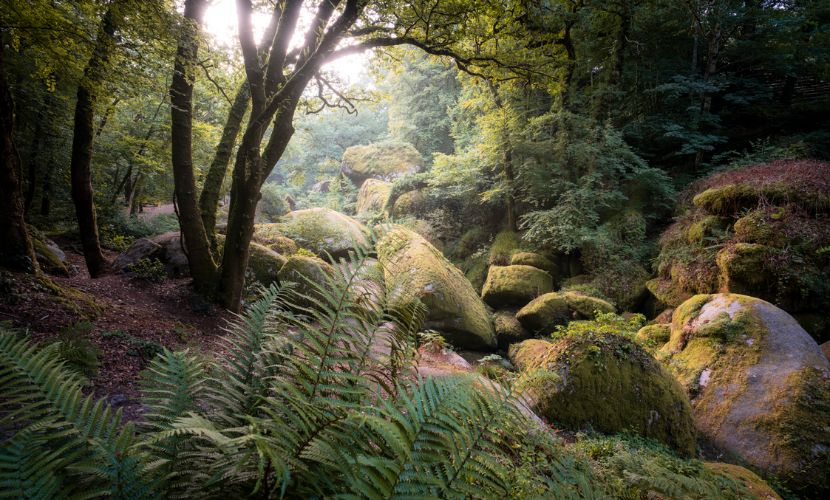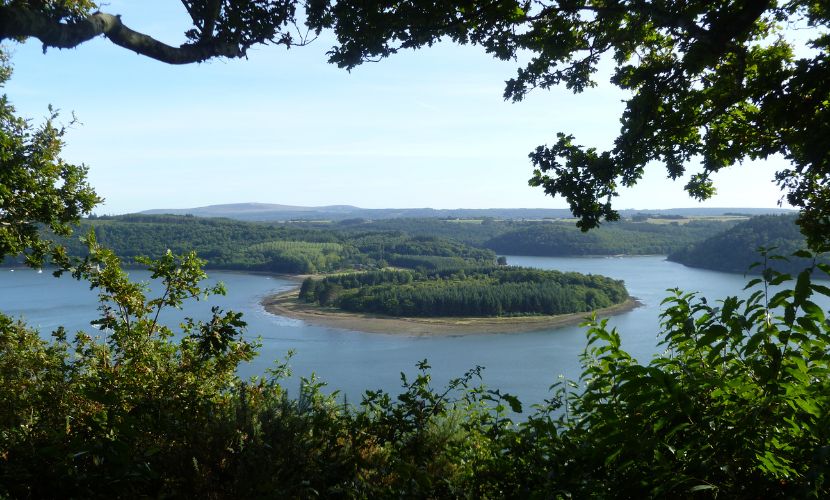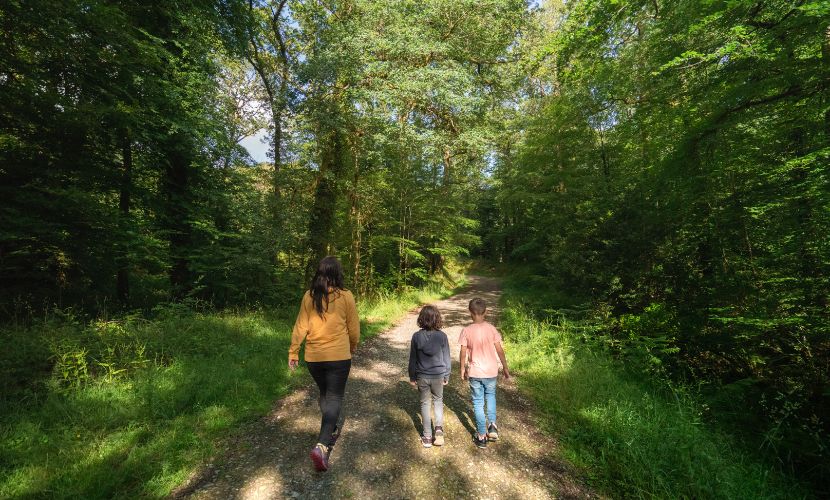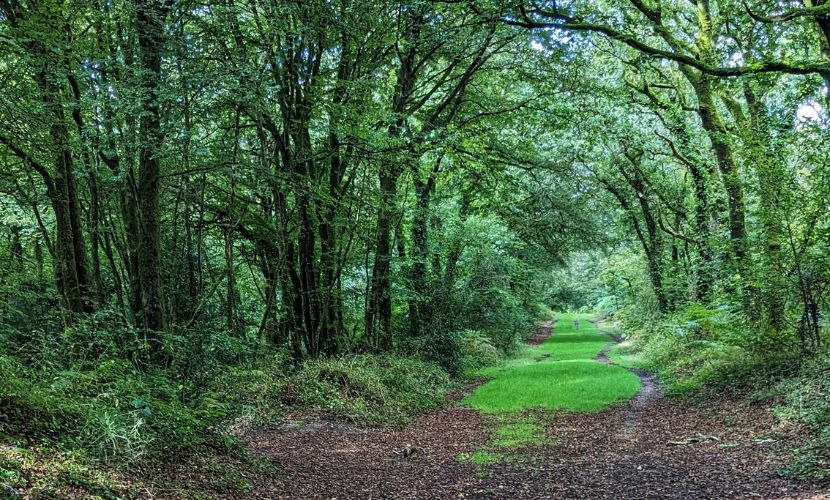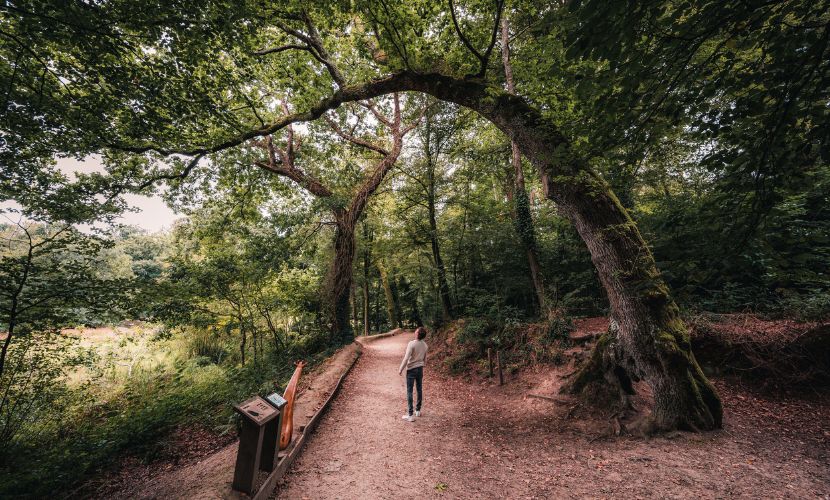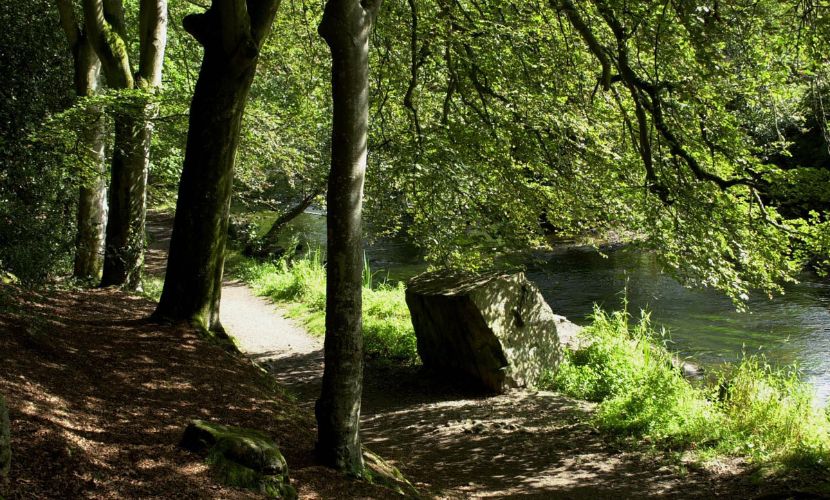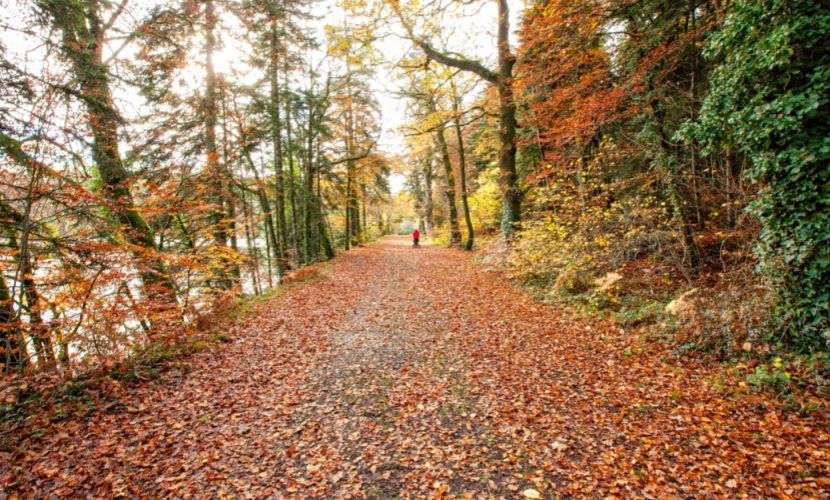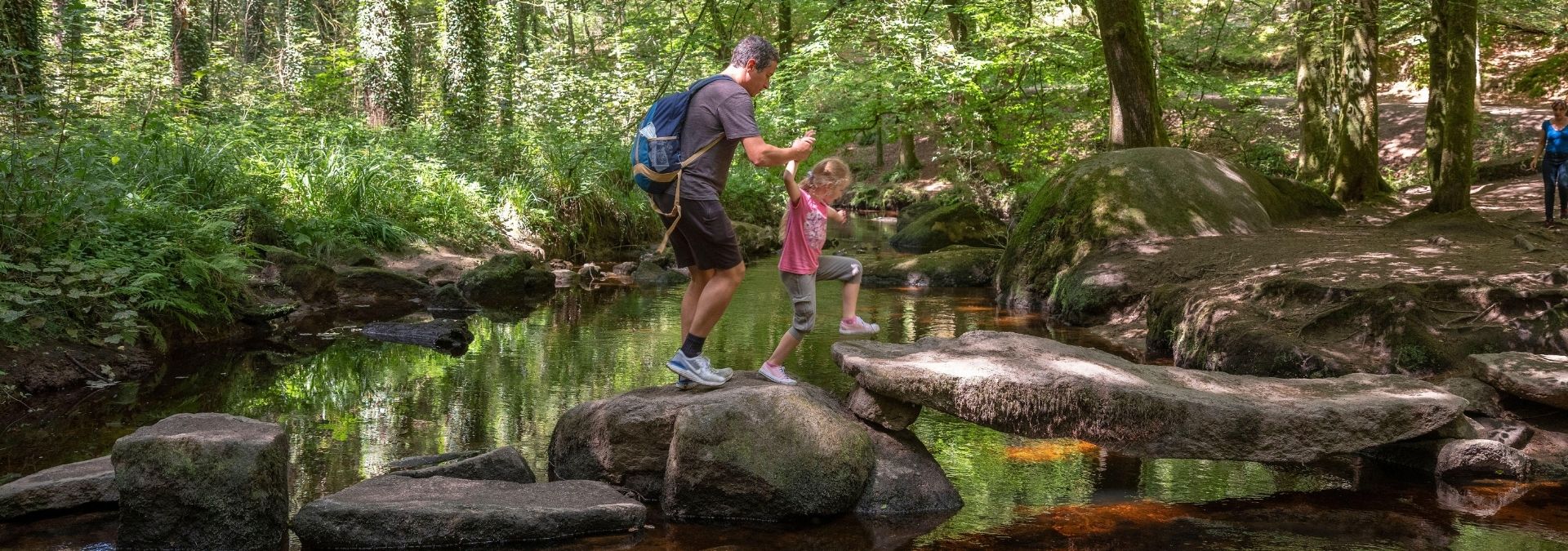
Huelgoat Forest
The state forest of Huelgoat covers nearly 2,500 acres and is synonymous with myth and legend. The story goes that one day the giant Gargantua angrily seized some large rounded rocks and threw them over the Arrée Mountains; the gigantic stones fell in Huelgoat, along the Argent River and throughout the forest. This local legend would certainly explain the haphazard tumbles of huge boulders that line the paths.
Huelgoat Forest is filled with hundred-year-old beech and oak trees, creating a special atmosphere that is both intriguing and soothing. At its heart is the ‘Trees of the World’ arboretum, a space dedicated to the world’s plant biodiversity. It boasts an extraordinary collection of 3,600 species of trees and shrubs from four continents. In a single visit, you can travel through the Himalayan valley, Chilean flora, and even see eucalyptus and shrubs from the Australian bush. There are also magnolias, rhododendrons, oaks, maples, pines, roses and bamboo groves, so it’s a truly varied journey through different plant species.
As you stroll along, have fun identifying the curious shapes of the rocks along the trail, including the Moulin du Chaos (Chaos Mill), the Grotte du Diable (Devil’s Cave), the Roche Tremblante (Trembling Rock), the Camp d’Artus (Artus Camp), the Gouffre (Abyss) and the Théâtre de Verdure (Theatre of Greenery). In the cool, humid atmosphere of the forest, the sun peeks through the ancient trees, its rays playing on the waterfalls and the leaves that carpet the ground.
Forêt de Landévennec
The state-owned Landévennec Forest is located at the mouth of the River Aulne, and rewards visitors with an exceptional panoramic view over the whole of the Rade de Brest. Formerly the property of Daoulas Abbey, it is one of the rare forests to be found on the Atlantic coast.
The site is divided into two sections: the Bois du Loch and the Bois du Folgoat. While the oak is the king of this forest, the beech is the second most common tree. In winter, the fog is so thick that the trees look like a string of columns rising from the ground to support the low sky. Pines are also regularly planted with a view to being sold to sawmills and the timber industry.
Several footpaths take you through the two parts of the forest on either side of the main road. Enjoy the peace and quiet of these wooded areas while taking in the amazing views of the meandering Aulne, the island of Térénez and the military ship graveyard.
The courtyard of the neighbouring abbey is home to another plant treasure: an Atlas cedar planted in 1911. Standing 24 metres tall, it has become the centrepiece of the park. Native to North Africa, this species is a symbol of strength, dignity and courage; as well as its majestic and powerful presence, it is often described as immortal because its wood does not rot.
Cranou forest
State-owned Cranou Forest is the largest in Finistère and it sits right at the heart of the Armorique Regional Nature Park, in line with the Arrée Mountains, straddling the communes of Hanvec and Le Faou. Crossed by the GR®37, it is an ideal place for walking, cycling and horse-riding. The site is mainly planted with huge oak and beech trees, which were once used to build ships for the Royal Navy, but there are also a few chestnut trees, Scots pine, maritime pine and spruce.
This Natura 2000 forest is also home to an arboretum in its north-western section, managed by the French National Forests Office. The aim is to study the effects of global warming on more than 135 tree species accustomed to an oceanic climate. These include species from Asia, North and South America and Europe, such as the Japanese Cedar, Sitka Spruce and Larch.
Look for the ‘sound walks’ available online or from the tourist office that will guide you through the paths and the ruins of a former manor house, telling the story of the old sawmills and horse-drawn logging.
On the edge of Cranou Forest, you’ll find the Domaine de Menez Meur; a microcosm of the landscapes and atmospheres of the Arrée Mountains, it is the largest natural area in Finistère. Preserved by Finistère authorities as part of the Armorique Regional Nature Park, it is home to a large mass of dry and wet moorland, carnivorous plants, peat bogs, ferns and mosses. The estate is also home to a wealth of wildlife, including deer, wolves and Breton breeds such as the caramel-coloured Froment du Léon cows, the black-and-white Bretonne Pie-noir cows, Ouessant sheep and western white pigs.
Névet Woods
Névet Woods stretch across the four communes of Plogonnec, Locronan, Kerlaz and Le Juch. This ancient druid sanctuary is now a perfect place for a stroll, with long, wide paths in the northern part of the wood that are ideally-suited to families, especially children on bikes, young walkers and pushchairs.
There is also a walk for people with reduced mobility. The lower part to the south is steeper with more ups and downs. Wherever you go, it’s easy to explore the narrow, winding paths – use the signposts to wander the length and breadth of this wood, without ever having to pass the same place twice. Mountain bikers can als make the most of the three circuits through the wood, with varying degrees of difficulty, while horse-riders have a large circuit circling the wood.
Heritage enthusiasts will notice several old charcoal-burning huts, circular huts around 7 metres across that are scattered throughout Névet Woods and are evidence of long-gone activity. There are ponds and wetlands, as well as the pretty Saint-Pierre chapel at the entrance to Plogonnec. This forest is a state-owned nature reserve where you can observe a wide range of plant species from deciduous to coniferous and fruit trees.
Penfoulic Wood
In Fouesnant-les-Glénan, Penfoulic Wood is a haven of peace, with its undergrowth and tall trees revealing an inlet from the sea, like a mangrove swamp nestling alongside the meadow of Shetland ponies.
As you venture through, you’ll come across a 650-metre path that has been awarded the ‘Tourism and Disability’ label for all four types of disability: auditory, visual, physical and mental. Various facilities have been installed to make it easier for people with disabilities to get around, including a special base for the path, a Braille and textured map at the start of the trail, markers adapted for the visually impaired to explain about the birds, and a tracking system for outdoor guidance.
Two majestic yew trees stand at the entrance to the path, as if standing guard Along the way, keep your eyes peeled for a wide variety of trees, including Japanese Larches, Sycamore Maples and European Aspen.
There is also a very old oak known as the ‘giraffe tree’. In 2011, it won ‘Tree of the Year’ in a competition launched by the UN as part of the International Year of Forests, organised by Terre Sauvage magazine and the ONF. With its curved trunk and its 18-metre height, it seems to be bowing down to the walkers who come to admire it. The large pond, a favourite habitat for grey herons and kingfishers, marks the end of this fun and educational trail.
The Bois d’Amour
Located a stone’s throw from the centre of Pont-Aven, the Bois d’Amour (woodland of love) is a magical place that continues to fascinate painters and walkers alike. The wood was extraordinary on a particular autumn day in 1988 when Paul Gauguin gave a painting lesson to his pupils. Paul Sérusier seized upon it and translated his surroundings into an imaginary world of lines, shapes and colours, its sensations, its fragrances and its sounds. The small canvas that resulted from this encounter, ‘Le Talisman’, is an abstract painting in bright colours, a real turning point in the history of art that many claim gave birth to modern art. Come and explore this mythical place and imagine yourself following in the footsteps of the painters.
After crossing the wood, follow a path lined with three-hundred-year-old English Oaks up to Trémalo chapel. Built in the 1500s, this chapel has inspired its share of international artists and houses the polychrome wooden Christ depicted by Paul Gauguin in his celebrated work, ‘Yellow Christ’.
Carnoët Forest
Carnoët forest, also known as Toulfoën Forest, covers over 1,700 acres in the communities of Clohars-Carnoët and Quimperlé. Previously a ducal forest then a royal forest, it is home to many species of tree including beech, oak, yew, chestnut and birch. The hundred-year-old avenues of trees and the ruins add to the magic of the place and you may well feel that you’ve stepped back in time. Lose yourself in history by visiting the remains of a castle from the 1200s that once belonged to the Breton Bluebeard. Carnoët Forest is the ideal place for a rural stroll along the Laïta River which, for a long time, played a vital role in trade between Quimperlé and the coastal ports. There are several remarkable viewpoints here, including the ‘Royal Rock’ overlooking the river and the château.
Take time to gaze at the urban trees
The city of Brest has fourteen remarkable trees, and one of them, not far from the banks of Penfeld River on Place d’Aquitaine, is a monumental oak that stands 28 metres tall. Beautifully displayed in the heart of a small square, it has reigned and flourished here for over 100 years. In Place Quilbignon in the Saint-Pierre district, admire the ‘Freedom Oak’, an evocative name for this tree that first planted its roots in 1881 in what was once a wood and then a battlefield. Some say that in the 1930s, firefighters used to practise using their water hoses by aiming at the top of the tree.
In spring and summer, Brest’s National Botanical Conservatory organises regular visits to the majestic trees that line the city. Don’t miss the huge specimens in Stang-alar Valley, or the magnolias in bloom at the end of February.
Quimper is also full of plant treasures. The garden of the Théâtre Max-Jacob is home to several rare and exotic species, including a Gingko Biloba, a Metasequoia Redwood, a Southern Magnolia and a Tulip tree. At the Domaine de Lanniron, you’ll find a monumental Holm Oak of an unusual shape, overhanging the Odet and thought to be more than 400 years old.
In Morlaix, in the courtyard of the Lycée du Porsmeur, stands a 300-year-old oak with a 30-metre span that can be seen from the rue du Poulfanc.
Storm Ciaran
Some of our woodlands and forests have suffered during recent severe weather. Finistère authorities are hard at work to ensure these green spaces are all fully accessible again.

